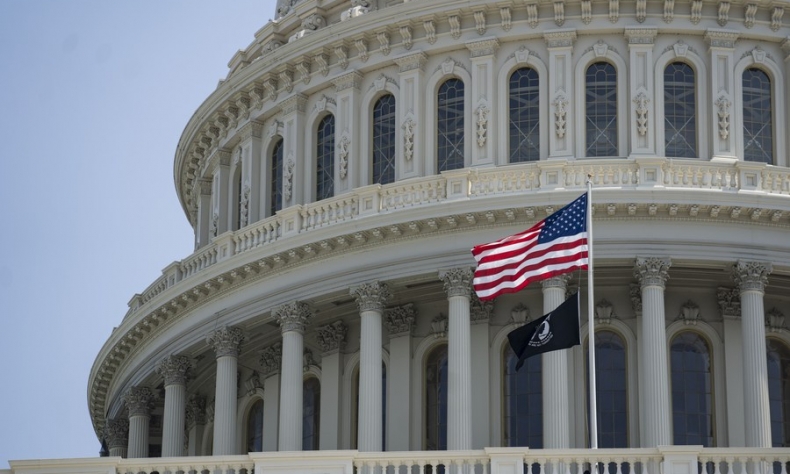U.S. Value-based Diplomacy Undermines Its Alliances in the Middle East

It is impossible to forge cooperation and partnership without consensus on threats or shared concerns of threats with regional actors.
The past few years have seen the Middle East become an arena for the United States to implement a strategy to contain China, Russia, and Iran. Its National Security Strategy (NSS) published in October 2022 designated two pages describing U.S. strategy in the region. Despite the variety of objectives and principles, the strategy places containing China, and in some way Russia and Iran, as one of its major missions in the region and reorganizing its alliances and quasi-alliances as one of the major instruments. Ambitious as it is, the strategy will ultimately go nowhere, as the world and the region are awakening to a totally new global context.
In general, Middle East NSS draws from reflections on the faults of previous administrations’ regime changes and military-centric policies, calculations of the overall strategy to contain major self-defined global and regional rivalries, and considerations of domestic politics. For instance, human rights and values are based on their own political values but in the name of the UN Charter. It also illustrates five principles, which can be simplified as building alliances, keeping freedom of navigation, reducing tensions, promoting integration, and promoting values.
Among all these objectives and principles, the most substantial part of the Middle East NSS might actually be the change of its major objectives in the region. It puts the Middle East as one of the most important parts of the U.S. global strategy to contain rivalries, while over decades, as the report outlines, the U.S. had employed military means to deal with non-traditional threats like terrorism and even launched a campaign of regime changes.

The U.S.’s strategy has largely emphasized the reorganization of partnerships, coalitions, and alliances for the purpose of containing its self-defined rivalries, including China, Russia, and Iran. The Middle East NSS claims that the U.S. has the comparative advantage to do so.
It is true that the U.S. used to have successfully organized partnerships, coalitions, and alliances. During the Cold War, the U.S. had been able to organize alliances in the Middle East and the whole world at large to confront the threat of the Soviet Union. In the early 1990s, the U.S. was able to form a multi-coalition within the UN framework to drive Saddam Hussein’s troops back to Iraq from Kuwait.
The success of the above-mentioned two cases should not be attributed to the comparative advantage the U.S. has but recognition of the regional actors’ common reasons to counter Soviet aggression and Saddam’s invasive actions. The latter in particular had undermined the most widely accepted principle of territorial sovereignty, which was also the foundation of regional order.
However, today’s regional and global contexts are quite, if not entirely, different. None of the Middle Eastern countries identify U.S. efforts to define China or Russia to be rivalries. On the contrary, most of the regional actors define China as their partner at different levels, either as comprehensive strategic partners, strategic partners, or partners, instead of a threat to regional order.
Most of the countries in the region have taken a balanced approach regarding their relations with the U.S. and Russia. Iran might be the one most close to what the U.S. defines as a rivalry in the region, but most Gulf Cooperation Council (GCC) countries have normal diplomatic relations with Iran. In addition, Saudi Arabia has conducted five rounds of negotiations with Iran regarding the de-escalation of tensions.

In fact, this is not the first time that the U.S. has spoken about reorganizing alliances. During Trump’s presidency, there were discussions of the Middle East Treaty Organization (METO), a Middle Eastern version of NATO, in confronting Iran. In Negev in March 2022, Israel’s foreign minister hosted a summit attended by U.S. Secretary of State Antony Blinken and foreign ministers of some Arab countries, which suggested that the U.S. intended to build alliances among Israel and Arab countries. Moreover, U.S. President Joe Biden’s visit to the Middle East in July this year again saw discussions about a potential Air Defense Alliance with Israel and some GCC countries. Biden also intended to bring India into the new Middle East alliance via the I2U2 Group.
However, none of these visions came to pass, nor are any of them currently under U.S. consideration. The reason is very simple. No Middle Eastern countries identify with the U.S.’s threat perceptions, and the rivalries defined by the U.S. are not necessarily shared by them.
Some other principles in the Middle East NSS even go against the idea of forming alliances. The same document focuses on promoting obvious U.S. values, like those on human rights, as one of the principles in dealing with the Middle East. However, such promotion of its own values without showing respect to other countries won’t pave the way for strong alliances.
U.S. efforts to form alliances are far from the tune of the region. As a result of decades-long trials and failures, the Middle East, particularly GCC countries, is now talking about strategic autonomy, which primarily means enhancing their own capabilities to safeguard their security while de-escalating tensions with neighboring countries. In addition, Middle Eastern countries would like to have diversified relations with a variety of actors outside of the region.
It is impossible to forge cooperation and partnership without consensus on threats or shared concerns of threats with regional actors. The U.S.’s vision in this regard is actually something ethereal and ultimately meaningless, and it will be isolated in the region if it doesn’t face up to the new reality.
Jin Liangxiang is Senior Research Fellow with the Center for West Asian and African Studies, Shanghai Institutes for International Studies.
 Facebook
Facebook
 Twitter
Twitter
 Linkedin
Linkedin
 Google +
Google +










